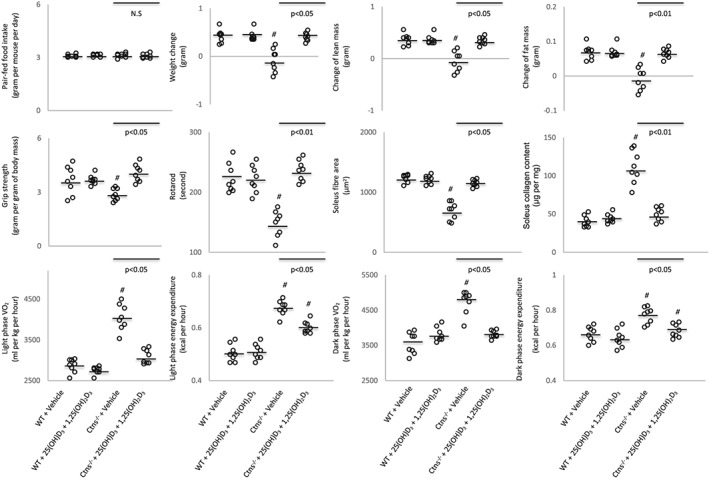Figure 1.

Repletion of vitamin D attenuates cachexia in Ctns−/− mice. Twelve‐month‐old wild‐type (WT) and Ctns−/− mice were treated with 25(OH)D3 and 1,25(OH)2D3 (75 μg/kg/day and 60 ng/kg/day, respectively) or ethylene glycol as vehicle for 6 weeks. Four groups of mice were included: WT + vehicle (n = 8), WT + 25(OH)D3 + 1,25(OH)2D3 (n = 8), Ctns−/− + vehicle (n = 8), and Ctns−/− + 25(OH)D3 + 1,25(OH)2D3 (n = 8). Ctns−/− + vehicle mice were fed ad libitum, whereas other groups of mice were fed the same amount of food intake as that of Ctns−/− + vehicle mice. Data are expressed as mean ± standard error of the mean. # P < 0.05, significantly different in Ctns−/− + vehicle and Ctns−/− + 25(OH)D3 + 1,25(OH)2D3 mice vs. WT + vehicle and WT + 25(OH)D3 + 1,25(OH)2D3 mice, respectively. Results of Ctns−/− + vehicle mice were also compared with Ctns−/− + 25(OH)D3 + 1,25(OH)2D3 mice.
